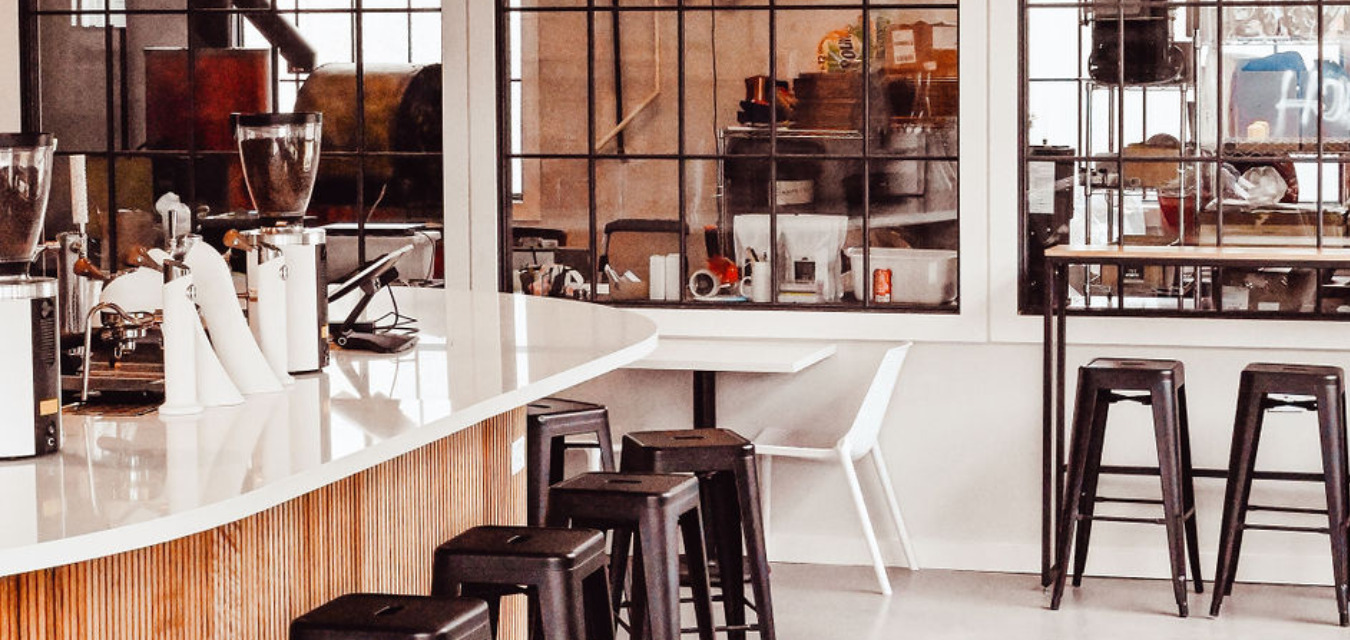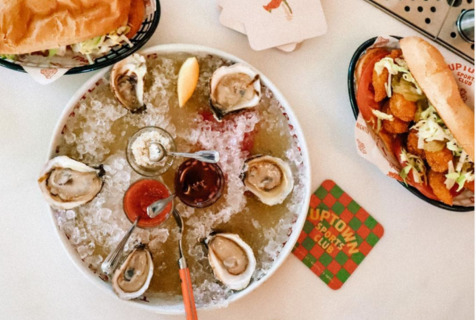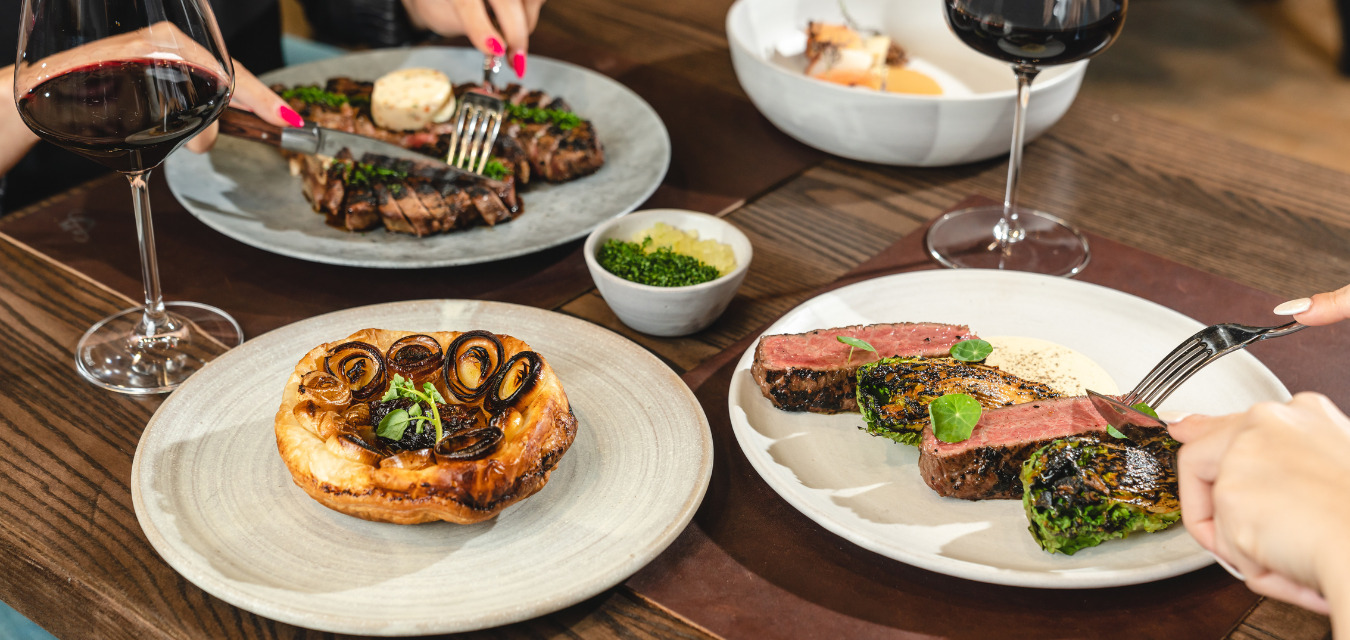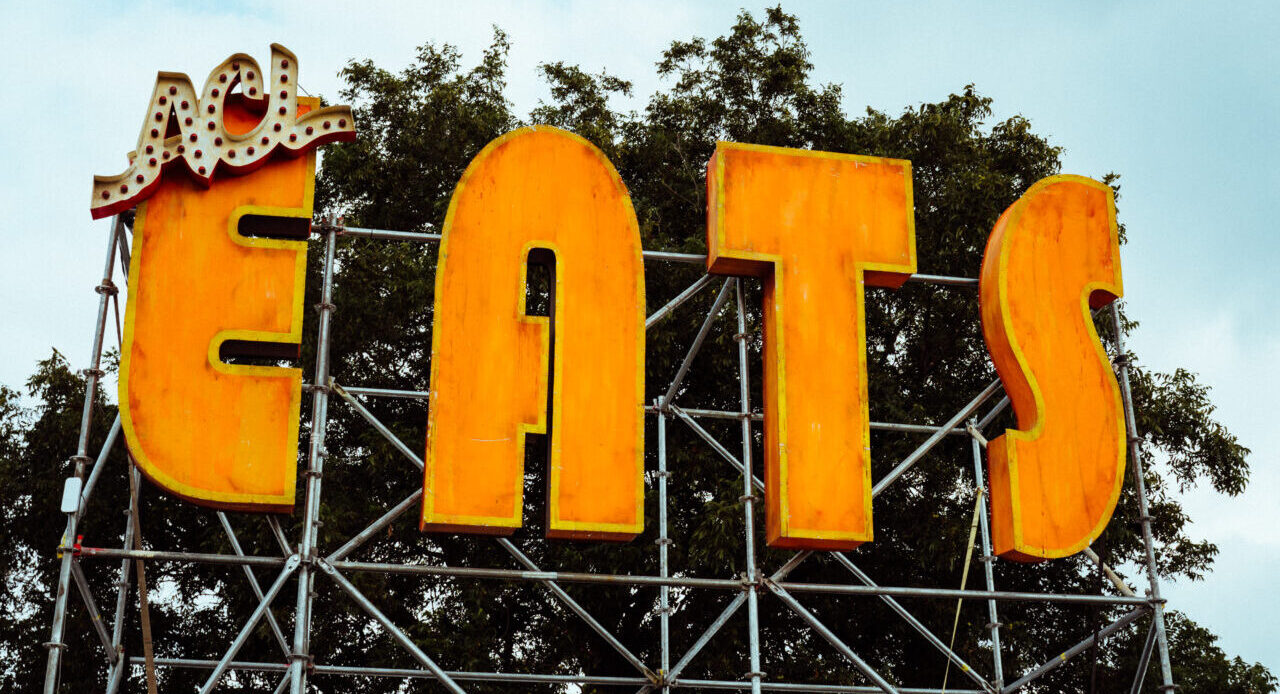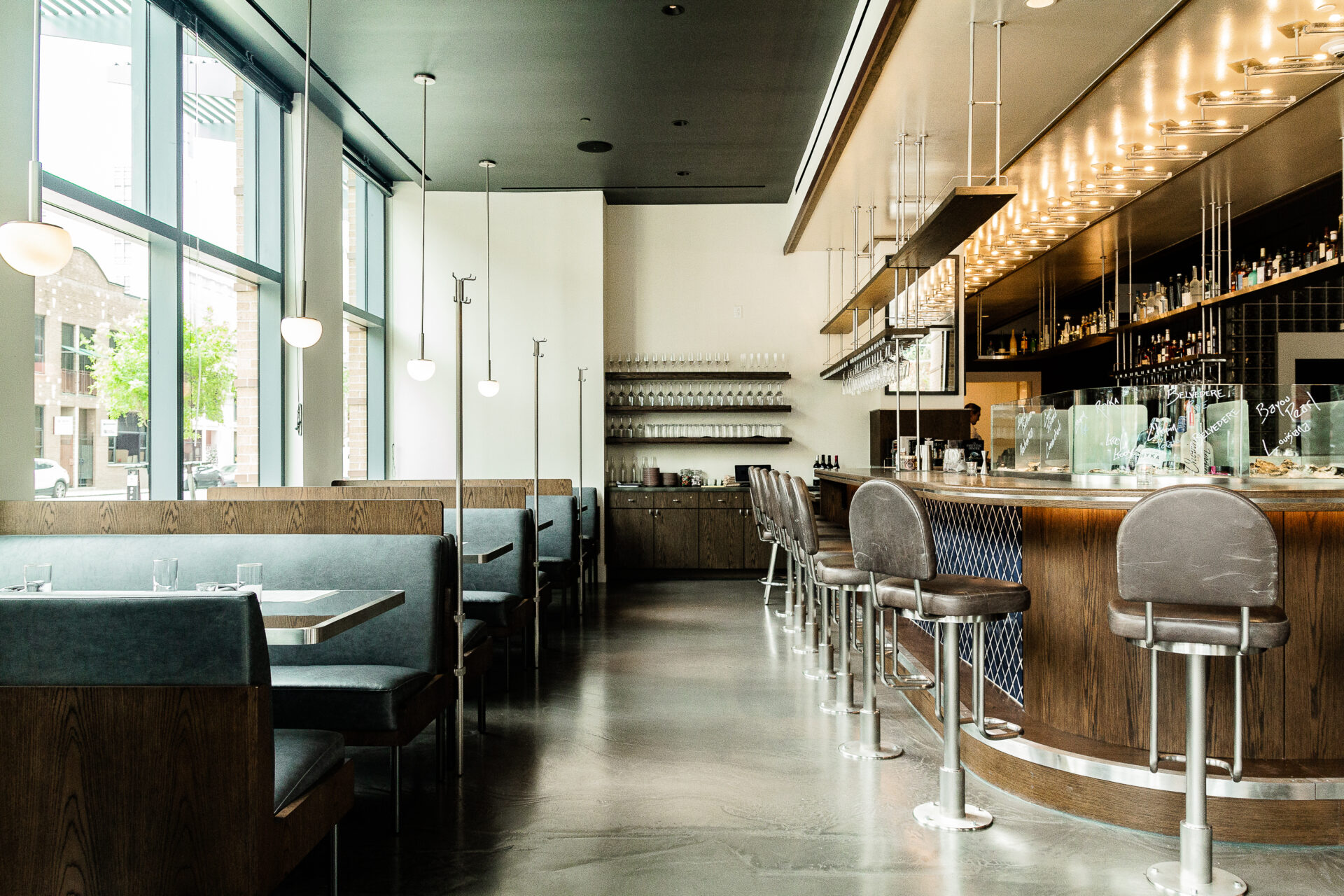Chef Steve McHugh is unstoppable. The acclaimed chef opened Cured in San Antonio in 2013, with a focus on whole animal cookery and local ingredients, and went on to become a six-time finalist for the James Beard Award for Best Chef: Texas. Last February, he opened his latest San Antonio concept, called Landrace, in the new Thompson San Antonio hotel. There, his focus is on indigenous and heirloom Texas ingredients cooked over a wood-burning grill.
McHugh launched his first and second Austin restaurants earlier in the spring of 2023, with the opening of Luminaire and Las Bis in the new Hyatt Centric on Congress Avenue downtown. Both Austin restaurants draw inspiration from Spain, from the empanadas and flawless house-cured jamón and cecina at Luminaire to the menu of snacks starring conservas served alongside vermouth- and sherry-centric cocktails and natural wines at Las Bis.
The busy chef took some time to chat with us about his latest Austin restaurants, his move to hotel F&B programs, San Antonio’s incredible growth trajectory, and his commitment to central Texas farmers and ranchers.
Steve McHugh Discusses His Hotel Restaurants
TLP: How did growing up on a farm in Wisconsin influence your culinary career?
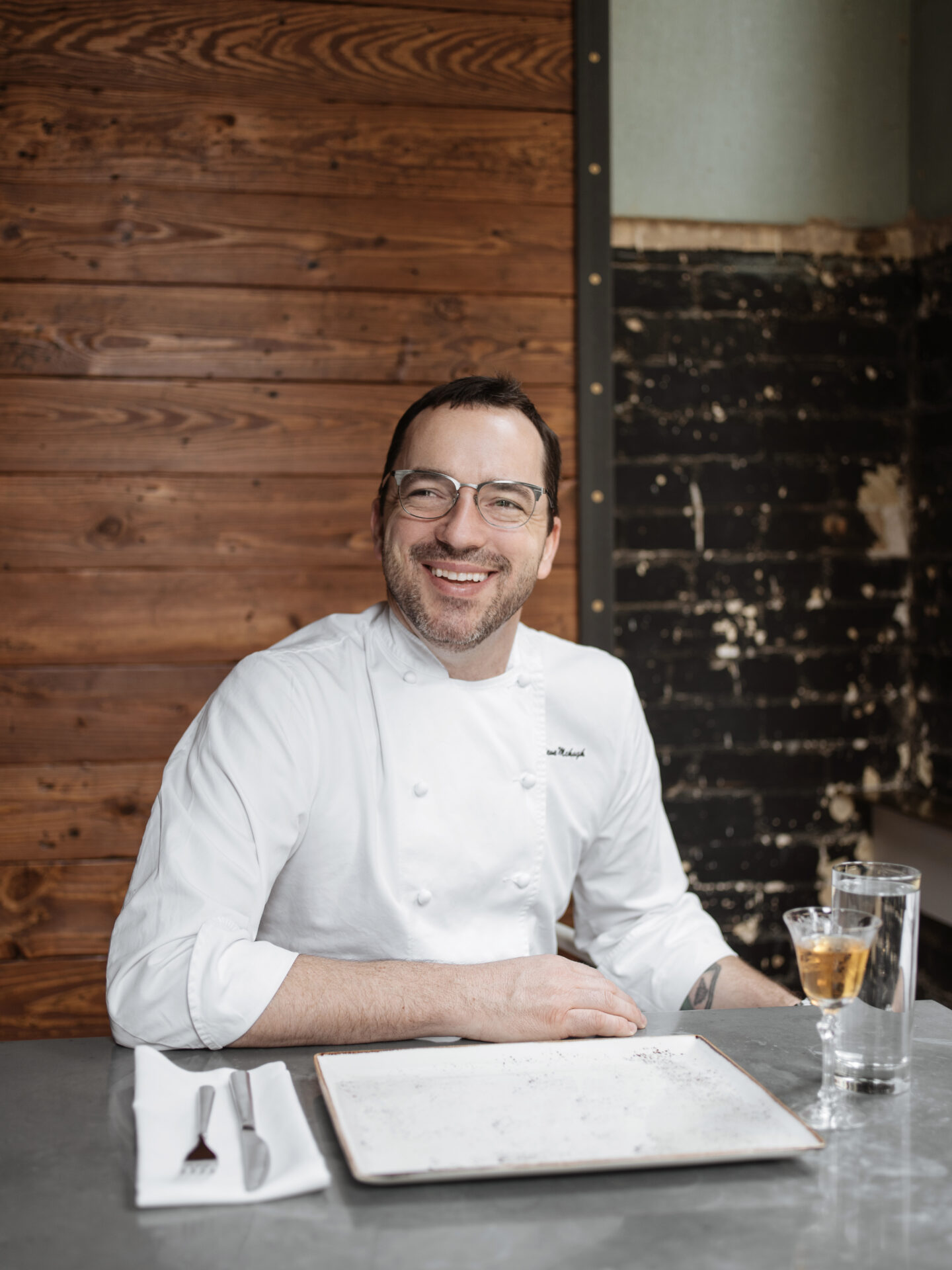
SM: Growing up in a small Wisconsin town of some 1,200 people, I didn’t grow up thinking that I would become a chef. But spending my childhood on my family’s small farm, I was fully immersed in farm-to-table cooking and eating, decades before it was a widely recognized trend. The appreciation I developed for the land and its natural abundance is something that has always remained central to my core culinary philosophy.
TLP: Can you describe the concept behind Landrace and some of the indigenous ingredients you utilize?
SM: Just to expand a little more on the meaning and intention behind Landrace, the name refers to a traditional variety of species, be that plant or animal, coming from native soil. Landrace can be used to describe something heritage, heirloom, and/or native, or something that has adapted extremely well to its environment. For example, if you look at Angus or Wagyu cattle in Texas, the cattle aren’t necessarily from Texas, but they do extremely well here. It’s not something that just survives, but thrives.
The focal point of the restaurant is the wood-burning, stainless steel grill. When guests sit down for dinner, they can actually see the steak being charred and the fish being seared. Not only do you smell the mesquite when you walk in, but you see it too. In terms of indigenous ingredients, we use everything from pecans to prickly pear and ground cherries throughout our menu.
TLP: When opening Luminaire, how did you design the restaurant with Austin in mind?
SM: The name Luminaire itself actually pays homage to the Austin restaurant’s proximity to the Paramount Theater, as it refers to the person who would shine the spotlight on stage. With Luminaire, we wanted to shed natural light on the incredible downtown location, as we are situated at Eighth and Congress. There are floor-to-ceiling windows that overlook the urban landscape and garage-style glass doors that open for indoor/outdoor dining.
In terms of the menu, we wanted to accommodate guests relaxing over a long leisurely meal and those just grabbing a quick bite and drink before or after a show.
TLP: What would you say are the threads of similarity running through all of your concepts?
SM: While each concept is distinct, sourcing locally and cooking naturally with an unadulterated methodology has always been my approach in the kitchen. My mission is to bring fresh products that originally and naturally go together. And in San Antonio, what grows together, cooks together, like corn, beans, and squash—famously called Three Sisters. And we also utilize the practice of whole-animal butchery to minimize waste. As chefs, we need to take the responsibility of protecting our environment, respecting our produce, and finding the most natural ingredients for our guests.
TLP: What is it like running food and beverage programs for two hotels now? Has it been challenging to stay true to your commitment to using high-quality, local products?
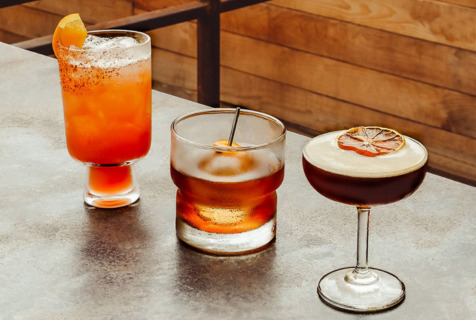
SM: Being situated within hotels, it was important to me that both concepts convey an authentic taste of place, particularly because our visitors may be experiencing Texas cuisine for the first time. Whether it’s the fish coming out of the Gulf or mesquite beans turned into flour for our crackers and bread, we wanted to celebrate local ingredients in creative ways. I’m grateful to work within hotels that share in my values, so quality is never sacrificed.
TLP: What does your process look like for selecting the Texas farmers and producers you work with?
SM: We source seasonal ingredients from 20 regional Texas growers—there is a rich plethora of produce from Texas. In fact, people may be surprised to learn that the olive oil we use is local to Texas and made from Arbequina olives. We also source quail and quail eggs from Broken Arrow Ranch, edible flowers and habaneros from Wholesome Harvest Farm, and the cabrito from Windy Hill Farms.
TLP: With all the growth San Antonio is seeing, how do you think that will affect the city’s culinary culture over the next decade or so?
SM: I’d still define San Antonio’s restaurant scene as underrated and misunderstood! Many people hear San Antonio and think only of Tex-Mex. And while we have the most killer Tex-Mex, we also have a whole gamut of diverse flavors and concepts that continue to diversify the dining landscape–and, I think more and more, people will make this discovery in the next decade. San Antonio is over 300 years old, so there is an incredible culinary history and appreciation for food that is ingrained in the culture. This has been a mainstay for the cuisine at my restaurants and with more people utilizing unique produce not only in San Antonio but in the farms across the state. Continuing to use indigenous ingredients keeps important food traditions relevant and supports our farmers. This is a way that we, as a chef community, can preserve the beauty that surrounds us for the next generation. I like to think that, in ten years, we will still be talking about three things: where we ate, what we ate, and where we are going to eat next.
Eat, Drink, Do in Austin
Uptown Sports Club
Aaron Franklin’s long-awaited restoration of Uptown Sports Club is now open on the east side. The 1949 building was originally a bar where Austin residents went to socialize and bet on sports. Now it’s an all-day bar with beer, wine, cocktails, and creamy frozen drinks, plus a New Orleans-inspired menu featuring po’ boys (add bacon to the fried green tomato), gumbo (order potato salad with that), and a raw bar with oyster, seafood platters, and other marine treats.
Progress Coffee + Beer
After a decade of focusing on roasting and e-commerce, Progress Coffee is back in a brand-new brick-and-mortar space in Cherrywood. In addition to coffee and espresso creations (like their signature Iced Lighting), the bar will feature draft and canned beer and cider plus wine, cocktails, frozen options, and boozy coffee (like Smokey and the Bandit, made with cold brew, Averna, Cynar, Licor 43, cinnamon syrup, tobacco bitters, and Amaretto cream). Pueblo Viejo and Burro Cheese Kitchen will also be on sight peddling food each day.
AirOtic Soirée
Looking for something out of the ordinary for your next date night? AirOtic Soirée has set up a residency at The Venue on 6th Street, with shows running each Friday and Saturday through the end of June. This open-air circus combines aerial acrobatics plus sensual burlesque numbers for an unforgettable experience. Get your tickets here!
keep reading
In the Field
Are Austin Hotel Restaurants Having a Moment?
Are hotel restaurants having a moment? Contributor Veronica Meewes spills on the best Austin hotels for eating and drinking.
On the Road
How to Eat Your Way through Austin City Limits
Austin City Limits will leave you with full hearts and bellies as you listen to your favorite artists and indulge in delicious festival foods.
Dining Out
The Grey’s Diner Bar Beckons Us Back for Seconds
The team behind The Grey in Savannah continues to thread their story into Austin, where the Diner Bar and the Grey Market now flourish.
share
trending content
-
Recap: TLP x Charleston Wine + Food
by TLP Editors -
Exploring Mississippi: A Quintessential Southern Experience
-
Recipes From Our Summer Issue
by TLP Editors -
Elevate Your AWESOME with an Alpharetta Music Getaway
by TLP's Partners -
9 Noteworthy Tennessee Restaurants | Listen
by Margaret Littman
More From In the Field
-
Mashama Bailey Heads to Austin
-
Meet the Nashville Duo Behind Champa Origins
-
Hot Places to Eat and Drink in Charlotte
-
A Local’s Top Places to Eat in Atlanta





